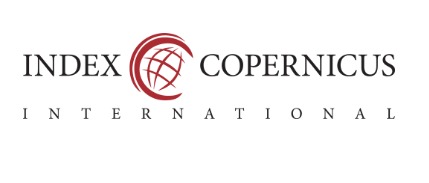Trilingual education development in universities of Kazakhstan
Abstract
Aim: This paper explores the rise of trilingual education in Kazakhstan and the results of the country’s language policy on the classroom experience. Trinity of Languages is a state-sponsored initiative that offers a promising opportunity for young Kazakhs to thrive in today’s competitive global marketplace. This paper emphasises the need for English learning in the Republic of Kazakhstan, despite the significance of Kazakh and Russian.
Method: To gauge students’ interest in learning three languages, we analyse data from focus groups.
Findings: The survey findings lend substantial empirical support to the author’s claims about the importance of implementing trilingual education in the academic sphere. Kazakhstan is currently implementing the teaching of three languages in schools. The research is grounded in the trilingual education model that draws on language’s expressive, unifying, and integrative powers.
Implications/Novel contribution: A true picture of Kazakhstan’s trilingual education landscape has emerged from this study. Students will use these findings to introduce contemporary methods of learning languages that focus on articulating and unifying language functions and on better understanding the paradigm of trilingual learning.
References
Boonyarattanasoontorn, P. (2017). An investigation of thai studentsâA ̆ Z english language writing difficulties ́ and their use of writing strategies. Journal of Advanced Research in Social Sciences and Humanities, 2(2), 111-118. doi:https://doi.org/10.26500/jarssh-02-2017-0205
Cartledge, P. (2005). Alexander the great: The hunt for a new past. New York, NY: Vintage Books.
Commercio, M. E. (2004). The âAIJpugachev rebellionâ ̆ A ̆ ̇I in the context of post-soviet kazakh nationalization. Nationalities Papers, 32(1), 87-113. doi:https://doi.org/10.1080/0090599042000186205
Cook, V. J. (1985). Language functions, social factors, and second language learning and teaching. IRAL-International Review of Applied Linguistics in Language Teaching, 23(1-4), 177-198. doi:https://doi.org/10.1515/iral.1985.23.1-4.177
Dave, B. (2003). Minorities and participation in public life: Kazakhstan. New York, NY: United Nations.
Dave, B. (2004). Entitlement through numbers: nationality and language categories in the first post-soviet census of kazakhstan. Nations and Nationalism, 10(4), 439-459. doi:https://doi.org/10.1111/j.1354-5078.2004.00176.x
Krashen, S., & McField, G. (2005). What works? reviewing the latest evidence on bilingual education. Language Learner, 1(2), 7-10.
Kunanbayeva, S. S. (2016). Educational internationalisation as a major strategy of the kazakhstani system of education. International Journal of Applied Engineering Research, 11(11), 7272-7277.
Mathiot, . G. P. L., M. (1975). The functions of language: A sociocultural nationalization. Nationalities Papers, 32(1), 87-113. doi:https://doi.org/10.2307/3316921
Nazarbaev, N. (2007). A new Kazakhstan in a new world: Address by the president of the republic of Kazakhstan Mr. Nursultan Nazarbayev to the people of Kazakhstan. Astana, Kazakhstan: Institute for Strategic Studies.
Nida, E. A., & Wonderly, W. L. (1971). Communication roles of languages in multilingual societies. The Bible Translator, 22(1), 19-37. doi:https://doi.org/10.1111/j.1354-5078.2004.00176.x
Tinajero, J. (2005). Bilingual education in texas: Lighting the path, leading the way. Language Learner, 1(2), 17-20.
Wilkinson, R., & Walsh, M. L. (2015). Integrating content and language in higher education: From theory to practice. Bern, Switzerland: Peter Lang Edition.
Williams, J. R. (1993). Expression and communication as basic linguistic functions. Intercultural Communication Studies, 3, 91-100. doi:https://doi.org/10.1080/14708477.2015.1058391

This work is licensed under a Creative Commons Attribution-NonCommercial 4.0 International License.












.png)










